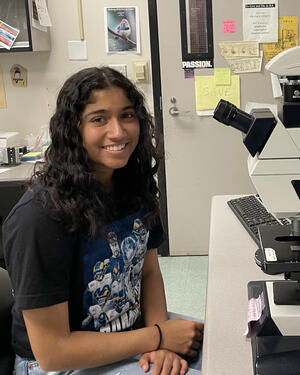Current Lab Members
A major goal of our lab is to understand relationships between development and learning at the level of both brain and behavior.
Development in animals is frequently characterized by periods of heightened capacity for both neural and behavioral change. Sensitive periods of development are those in which brain and behavior are most susceptible to modification by experiential factors in the external environment and/or changes in internal milieu (such as levels of hormones and growth factors).
Arianna Acevedo-Ithier
RESEARCH TECHNICIAN
Cortico-basal ganglia pathways play a critical role in the process of motor skill learning and goal-directed behaviors. The structures constituting the basal ganglia are well conserved at some level across all vertebrate species. In songbirds, parallel loops formed by LMAN neurons are hypothesized to directly affect vocal learning in juveniles during their sensitive developmental period, driving the trial-and-error process of goal-directed skill learning and the resulting vocal motor output. Through the assessment of tutor song similarity and the recording of neural responses in juvenile zebra finches, we aim to identify where in this region the signals for vocal learning are encoded.
Huijing Gao
GRADUATE RESEARCH ASSISTANT, Ph.D CANDIDATE
Aditi Jagannathan
UNDERGRADUATE RESEARCH ASSISTANT
When you learn how to ride a bike, learn a new language, or learn how to surf the waves in Los Angeles, you’re undergoing motor skill learning. This refers to the acquisition of new behaviors as trial and error of variable actions are refined into stereotyped behaviors. Information related to motor skill learning is processed by the basal ganglia, a group of subcortical nuclei. In mammals, the basal ganglia have a direct pathway with neurons projecting directly to the thalamus and an indirect pathway with neurons projecting onto the thalamus-projecting neurons. Our project focuses on identifying direct and indirect pathways in Area X, a region in the avian basal ganglia that mediates vocal learning in young songbirds.

Mira Nigudkar
UNDERGRADUATE RESEARCH ASSISANT
During motor skill learning, cortico-basal ganglia circuits compare self-generated motor output to a memorized goal behavior, evaluating whether “own” behavior matches desired behavior. Using songbirds as a model system, we can study this evaluative comparison that is integral to vocal learning, a type of motor skill learning. In songbirds, Area X is a specific region of the basal ganglia specialized for vocal learning, and is thought t0 include “direct” and “indirect” pathways, as in mammals. We are using tract-tracing methods and immunohistochemistry to test whether the transcription factor FoxP2 can serve as a marker for the indirect pathway in Area X. Our future goal is to test the role of direct versus indirect pathways of the basal ganglia in learning.

Megan Rajan
UNDERGRADUATE RESEARCH ASSISTANT
